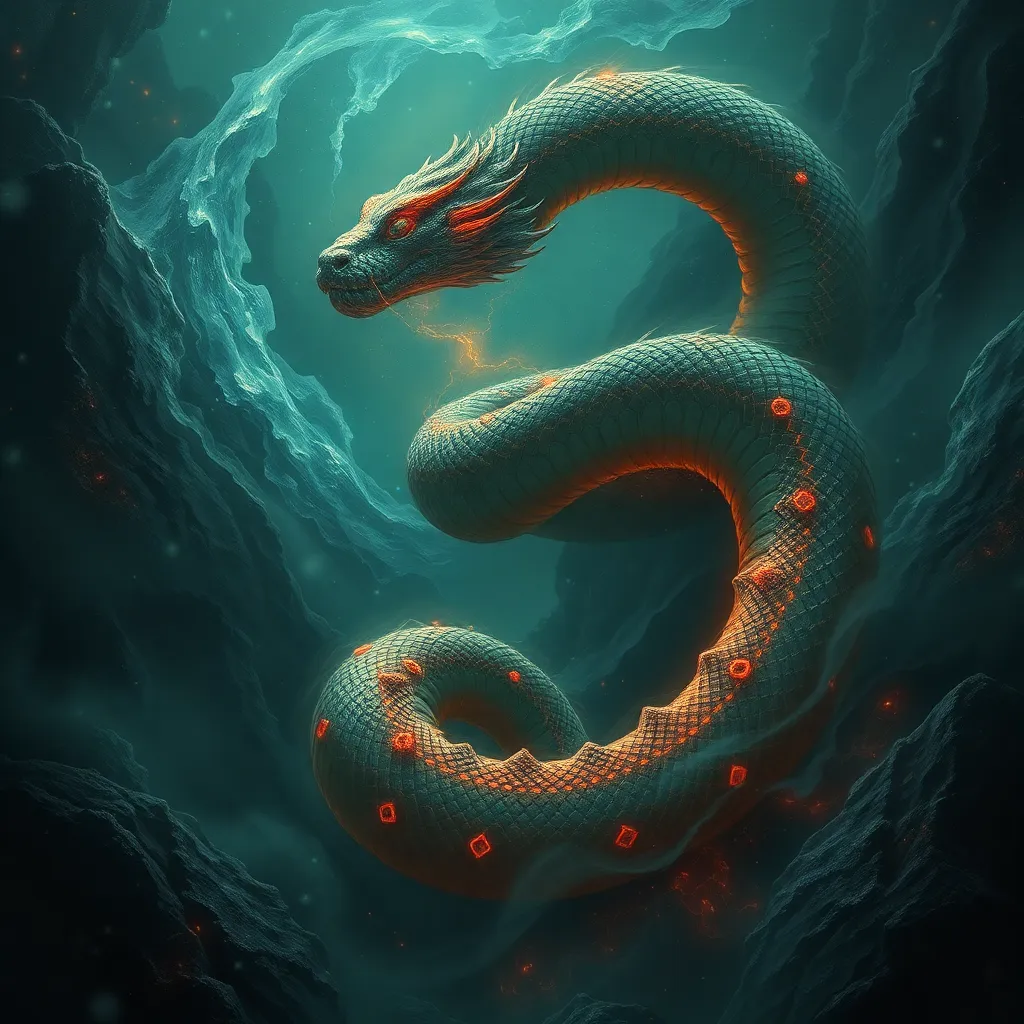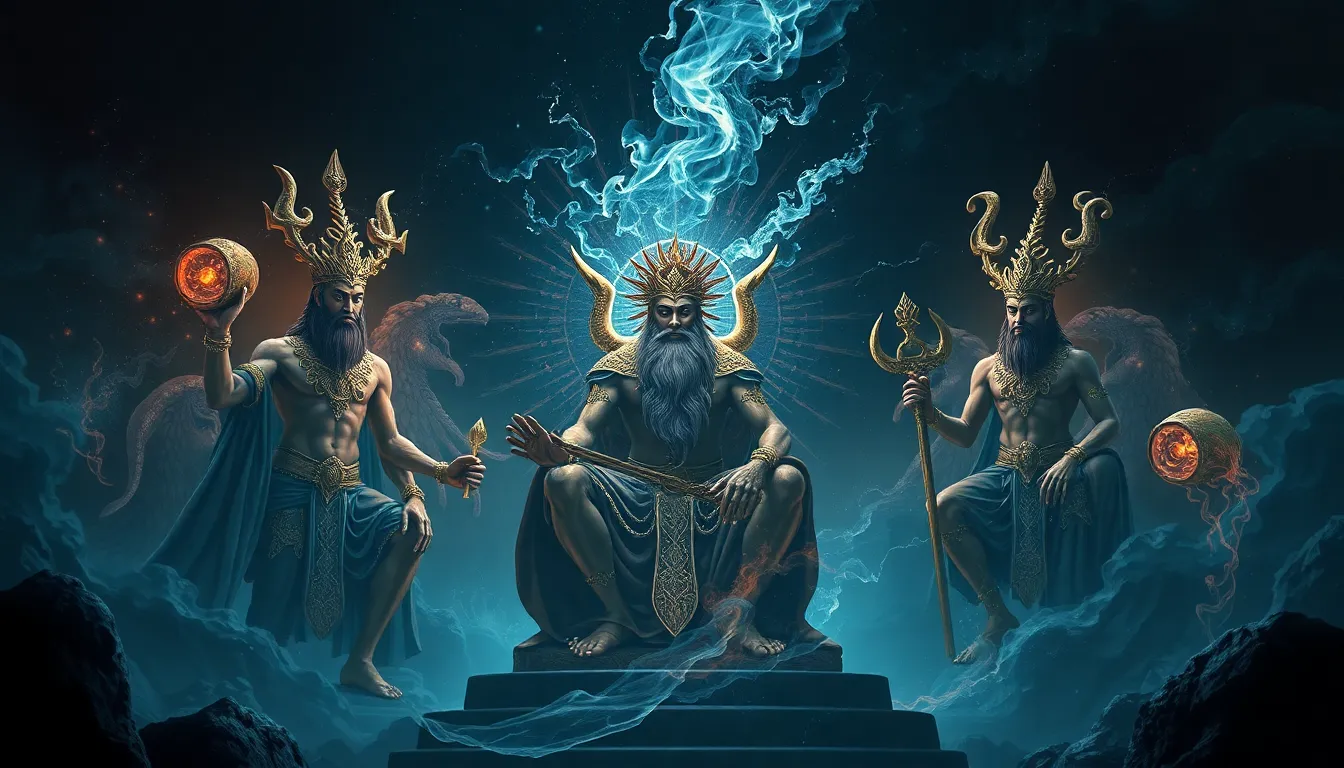The Serpent’s Impact: Jörmungandr’s Influence on Modern Culture and Literature
I. Introduction
Jörmungandr, also known as the Midgard Serpent, is a significant figure in Norse mythology, known for encircling the Earth and biting its own tail. This colossal sea serpent is a child of the trickster god Loki and the giantess Angerboda, representing chaos and the cyclical nature of life and death. In the grand tapestry of Norse myths, Jörmungandr’s existence is intricately linked to the apocalyptic events of Ragnarök, where it is destined to battle the god Thor.
Mythological figures like Jörmungandr continue to resonate with contemporary society, influencing various forms of culture, literature, and art. This article aims to explore the profound impact of Jörmungandr on modern literature and culture, highlighting its enduring legacy and transformative symbolism.
II. The Mythological Background of Jörmungandr
In Norse mythology, Jörmungandr plays a critical role in the cosmic struggle between order and chaos. As one of Loki’s offspring, it was cast into the ocean surrounding Midgard (Earth) by Odin, where it grew to an immense size, ultimately encircling the world. This act of containment symbolizes the delicate balance between creation and destruction inherent in many mythologies.
The World Serpent’s significance becomes particularly evident during Ragnarök, the end of the world in Norse lore. During this cataclysmic event, Jörmungandr emerges from the ocean, engaging in a fierce battle with Thor, resulting in their mutual destruction. This narrative underscores themes of fate, inevitability, and the cyclical nature of existence.
Comparatively, other cultures feature serpentine figures that echo similar themes. For instance:
- Quetzalcoatl: The feathered serpent in Aztec mythology represents wisdom and life.
- Ouroboros: The ancient symbol of a serpent eating its own tail, representing eternity and the cycle of life.
- Naag: In Hindu mythology, serpents are revered as powerful beings, often associated with water and fertility.
III. Jörmungandr in Modern Literature
Jörmungandr has found its way into contemporary novels, poetry, and other literary forms, often symbolizing deeper themes of chaos, identity, and transformation. Authors across genres have drawn inspiration from this mythological figure, embedding its essence into their narratives.
In modern literature, Jörmungandr often symbolizes:
- The struggle against overwhelming odds.
- The confrontation with one’s inner demons.
- The inevitability of change.
Notable authors, such as Neil Gaiman and Rick Riordan, have incorporated Jörmungandr in their works. Gaiman’s Norse Mythology presents a retelling of the myths, giving readers insight into the serpent’s character, while Riordan’s Magnus Chase series brings Jörmungandr into a modern context, appealing to younger audiences and introducing them to Norse mythology.
IV. Jörmungandr in Popular Media
In addition to literature, Jörmungandr has made notable appearances in movies, television shows, and video games, showcasing its versatility as a character and symbol. These adaptations often reinterpret the serpent’s story, providing fresh perspectives on its mythological origins.
Some prominent representations include:
- Movies: Films such as Thor: Ragnarok depict Jörmungandr’s mythological battles, blending action with ancient lore.
- Television: Series like Vikings reference the serpent, enriching the narrative with Norse mythology.
- Video Games: Titles like God of War feature Jörmungandr as a character, allowing players to interact with mythological elements.
The visuals and narratives surrounding Jörmungandr in these mediums often emphasize the themes of conflict and transformation, resonating with audiences and keeping the myth alive in popular culture.
V. Jörmungandr and Contemporary Art
Jörmungandr’s impact extends beyond literature and media into the realm of visual art. Contemporary artists have drawn inspiration from the serpent’s powerful imagery, using it as a motif in various artistic expressions.
Examples of Jörmungandr’s influence in modern art include:
- Painting: Artists create dynamic representations of the serpent, exploring themes of chaos and nature.
- Sculpture: Installations that depict Jörmungandr often invite viewers to engage with the concepts of infinity and transformation.
- Performance Art: Some artists incorporate Jörmungandr into performances, exploring the narrative’s physical and emotional dimensions.
This interdisciplinary influence illustrates the fluidity of myth in contemporary culture, where ancient symbols find new meanings and relevance.
VI. The Serpent’s Symbolism in Modern Culture
In modern culture, Jörmungandr embodies various symbolic themes that resonate deeply with contemporary audiences. As a figure of chaos and transformation, it prompts reflection on the nature of existence and human experience.
Key aspects of Jörmungandr’s symbolism include:
- Chaos: The serpent represents the chaotic forces in life, challenging individuals to confront their fears and uncertainties.
- Transformation: Jörmungandr’s cyclical nature signifies the potential for change and rebirth, echoing themes in personal growth.
- Environmental Themes: As a creature of the sea, Jörmungandr can also symbolize humanity’s relationship with nature, raising awareness of ecological issues.
These themes have sparked contemporary philosophical discussions, encouraging individuals to engage with the complexities of existence and the interconnectedness of life.
VII. Cross-Cultural Influences and Adaptations
Jörmungandr’s narrative has transcended cultural boundaries, contributing to the globalization of Norse mythology. This cross-cultural exchange has led to adaptations and reinterpretations that enrich its story.
In various cultures, serpent figures often share common traits, prompting comparisons with Jörmungandr:
- Symbolism of Knowledge: Many cultures view serpents as symbols of wisdom and enlightenment.
- Guardians of the Underworld: Similar to Jörmungandr’s role in Ragnarök, serpents often serve as guardians in mythological narratives.
- Universal Themes: The serpent’s representation of chaos and order resonates across different mythological traditions.
This blending of narratives highlights the interconnectedness of human storytelling, revealing shared themes that persist throughout history.
VIII. Conclusion
Jörmungandr’s significance in modern culture and literature is profound, reflecting the enduring nature of mythological figures. As a symbol of chaos, transformation, and the cyclical nature of existence, Jörmungandr continues to inspire contemporary creators across various mediums.
The exploration of Jörmungandr’s influence reveals the relevance of myth in understanding human experience, reminding us of the stories that shape our cultural landscape. Ultimately, the serpent’s legacy invites us to reflect on our own narratives, the chaos we face, and the transformations that await us.



